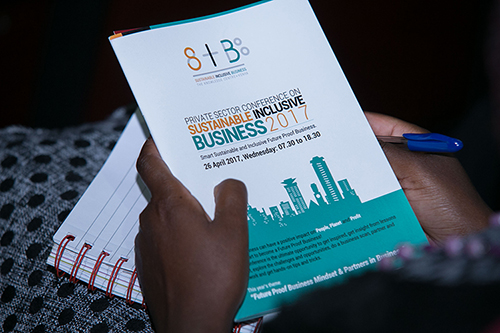
More than 100 billion tons of resources enter the economy every year — everything from metals, minerals and fossil fuels to organic materials from plants and animals. Just 8.6 percent gets recycled and used again. Use of resources has tripled (automatic PDF download) since 1970 and could double again by 2050 if business continues as usual. We would need 1.5 Earths to sustainably support our current resource use.
This rampant consumption has devastating effects for humans, wildlife and the planet. It is more urgent than ever to shift from linear, use-it-up-and-throw-it-away models to a circular economy: where waste and pollution are designed out, products and materials are kept in use for longer, and natural systems can regenerate.
A circular economy isn’t just about fixing environmental wrongs, though: Evidence shows it can bring big opportunities and positive impacts across industries, sectors and lives.
A growing number of businesses, governments and civil society organizations are coming together to drive the change through the Platform for Accelerating the Circular Economy (PACE). More than 200 experts from 100 organizations helped develop the Circular Economy Action Agenda, a set of publications that analyze the potential impact and call for action across five key sectors: plastics, textiles, electronics, food and capital equipment (machinery and large tools such as medical scanners, agricultural equipment and manufacturing infrastructure). The Action Agenda demonstrates five opportunities associated with the shift to a circular economy:
1. Make better use of finite resources
The circular economy concept is all about making better use of natural resources such as forests, soil, water, air, metals and minerals.
Take the textiles industry. Each year, huge quantities of fossil fuels are used to produce clothes from synthetic fibers each year. Textile production (including cotton farming) uses almost 100 billion cubic meters of water per year, about 4 percent of global freshwater withdrawal. At the same time, people throw away still-wearable clothes worth an estimated $460 billion each year.
Creating a circular economy for textiles means shifting to recycled and recyclable materials in order to reduce the amount of land, water and fossil fuels used to produce new clothes. It means changing consumption patterns to reduce new purchases and keep clothes in use for longer, for instance by developing the second-hand and rental markets as well as changing the culture of fast fashion. Research suggests that the purchase of 100 second-hand garments can displace the production of 85 new garments. And finally, it means ensuring that clothes at the end of their life are collected and recycled or repurposed into new clothes, further reducing resource use. Read more


